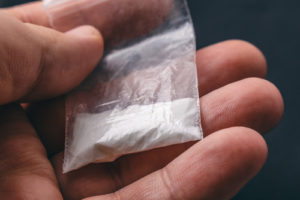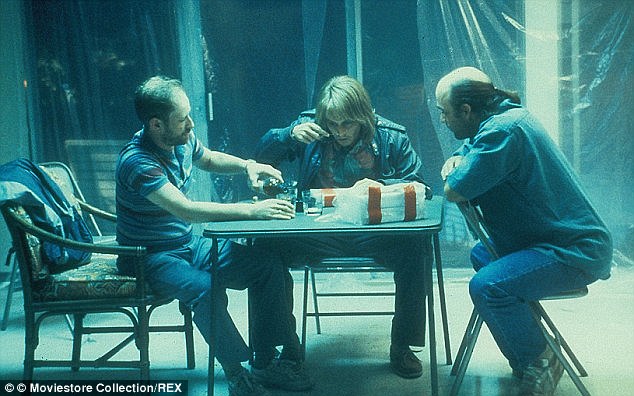By: Design for Change
Categories:
Cocaine Use in Movies: Fake or Not, It Still Has an Impact
You are here:Everyone loves movie night. Getting comfortable on the sofa with our favorite snacks and a good movie is an American tradition. Yet, as a result of the drug culture portrayed in many movies, parents must supervise family movie nights carefully. Studies show that frequently viewing cocaine use in movies and other media can have a harmful effect on adolescents as well as young adults.
The characterization of drug use in movies, music, TV shows, and social media can influence how people perceive drug culture. As a result, they may see drug use as glamorous, exciting, and acceptable. Although the actors are not actually snorting cocaine, they convey the message that cocaine use is quite common.
Do Actors Really Snort Cocaine in Movies?
 Have you watched a movie where the character snorts a line of cocaine and wondered what the powder is? The different products they use to make it look real will surprise you.
Have you watched a movie where the character snorts a line of cocaine and wondered what the powder is? The different products they use to make it look real will surprise you.
For instance, if cocaine is simply shown in bags or on a table, it could be any number of powdery substances. They often use cornstarch mixed with baby powder.
But, if the actor snorts cocaine, it is usually powdered lactose or vitamin B powder. To keep actors from getting nasal congestion, prop masters coat the straw with Vaseline. This trick allows the powder to stick to the straw rather than going into the actor’s nose.
All in all, whether the powder is real cocaine is not the problem. The problem is in the message. Young people, and even some adults try cocaine because they were influenced by a movie.
How Prevalent Is Cocaine Use in Movies?
People have used cocaine since about 1569 when Europeans discovered the coca leaf had intoxicating qualities. Since then, it served as a pain suppressant, anesthesia, and weight loss tool. Through the years, cocaine was sold commercially and was even part of the original Coca-Cola recipe in 1886. It went on to be marketed over the counter as a toothache remedy for children and as an additive for cigarettes.
Cocaine was made illegal for non-medical use in 1922. But, that didn’t stop rampant cocaine use. People from all walks of life were using cocaine. It was also common for people in the movie industry to use cocaine behind the scenes. Needless to say, it wasn’t long before cocaine made its appearance on-screen. Fast-forward to today and the number of movies depicting cocaine use is shocking.
To illustrate, here are a few of the films released since 2000 that depict cocaine use and trafficking:
- American Psycho, 2000
- Traffic, 2000
- Blow, 2001
- Acts of Worship, 2001
- City of God, 2002
- Analyze That, 2002
- 21 Grams, 2003
- District 13, 2004
- The Business, 2005
- Cocaine Cowboys, 2008
- Adulthood, 2008
- Awaydays, 2009
- Easy Money, 2010
- The Wolf of Wall Street, 2013
- American Made, 2017
- Rambo: Last Blood, 2019
- Cocaine Bear, 2023
Unfortunately, this list is just a small sample of a large number of films before and after 2000 that depict drug use. These are just a few that specifically focus on cocaine use and trafficking. Movies also depict the use of alcohol, marijuana, heroin, and other drugs. Furthermore, the list doesn’t include numerous television series that depict the use of cocaine and other drugs.
The Impact of Depictions of Cocaine Use in Movies
Research shows that our sources of entertainment can contribute to substance use. When actors or celebrities engage in a certain behavior, it activates a part of our brain that controls making positive associations and building trust. So, if our favorite celebrity wears name-brand shoes and clothes or endorses any product, people want to try it.
The same goes for substance use. Young people don’t easily make the distinction between fiction and reality. So, when actors depict drug use in movies, young people try it thinking they will be cool, too. Consequently, cocaine use by millions of people mimicking celebrities has created a public health concern.
Many people mistakenly believe recreational cocaine use is not harmful or addictive. If this were true, millions of people would not need professional help to overcome cocaine abuse. Currently, cocaine is the third most-used illicit drug in America.
- More than 1.3 million people deal with cocaine use disorder.
- Furthermore, cocaine use accounts for about 54% of drug-related incarcerations and about 350,000 ER visits each year.
- Ultimately, heavy cocaine use can lead to overdose. More than 16,000 fatal overdoses involving cocaine occur in the U.S. each year.
- In 2020, about 97,000 minors reported using some form of cocaine.
- In 2020, 5.3% of young adults reported using cocaine in the past year.
- About 16.5% of older adults reported using cocaine in 2020.
Fortunately, cocaine abuse can be overcome with help from a comprehensive addiction treatment program.
Beat Cocaine Use with Help from Design for Change Recovery
Beating cocaine use disorder isn’t easy for even the most determined individual. However, with the right addiction treatment program, you can succeed.
At Design for Change, we provide personalized cocaine addiction treatment programs for each client. We realize that everyone has their own reason for using drugs and that they will respond to treatment differently. It’s important to us that our clients reach their recovery goals and we consider their unique situation and preferences when forming their treatment approach.
If you need treatment for cocaine addiction, reach out to Design for Change Recovery in Lancaster, CA. One of our addiction specialists will discuss our program with you and help you find the path to recovery that suits your needs.
Sources:
nypost.com/ – List of Drug Films
/nypost.com/ – What Actors Really Snort, Shoot, and Smoke on Set
ncbi.nlm.nih.gov/ – Movie Exposure to Alcohol Cues and Adolescent Alcohol Problems: A Longitudinal Analysis on a National Sample


